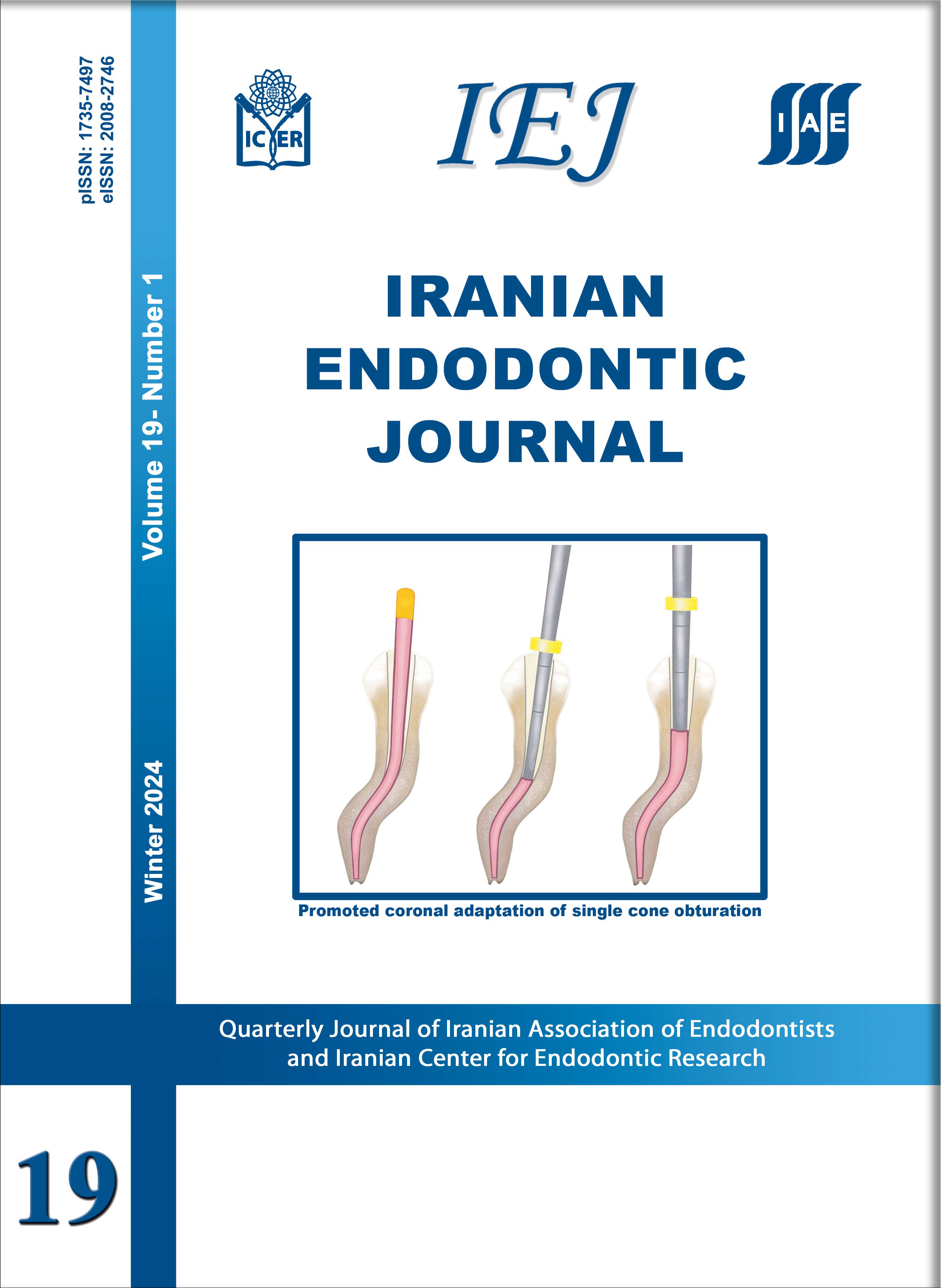Comparing the Coronal Flaring Efficacy of Five Different Instruments Using Cone-Beam Computed Tomography
Iranian Endodontic Journal,
Vol. 10 No. 4 (2015),
9 September 2015
,
Page 263-267
https://doi.org/10.22037/iej.v10i4.8523
Abstract
Introduction: Fearless removal of tooth structure during canal preparation and shaping has negative effects on the prognosis of treatment. On the other hand, sufficient pre-enlargement facilitates exact measurement of the apical size. The present in vitro study aimed to compare the efficacy of Gates-Glidden drills, K3, ProTaper, FlexMaster and RaCe instruments in dentin removal during coronal flaring using cone-beam computed tomography (CBCT). Methods and Materials: A total of 40 mandibular molars were selected and the coronal areas of their mesiobuccal and mesiolingual root canals were randomly prepared with either mentioned instruments. Pre- and post-instrumentation CBCT images were taken and the thickness of canal walls was measured in 1.5- and 3-mm distances from the furcation area. Data were analyzed using the one-way ANOVA. Tukey’s post hoc tests were used for two-by-two comparisons. Results: At 1.5-mm distance, there was no significant difference between different instruments. However, at 3-mm distances, Gates-Glidden drills removed significantly more dentin compared to FlexMaster files (mean=0.18 mm) (P<0.02); however, two-by-two comparisons did not reveal any significant differences between the other groups. Conclusion: All tested instruments can be effectively used in clinical settings for coronal pre-enlargement.
Keywords: Cone-Beam Computed Tomography; Coronal Flaring; Coronal Pre-Enlargement; Root Canal Treatment; Root Canal Preparation
How to Cite
- Abstract Viewed: 412 times
- PDF Downloaded: 841 times




